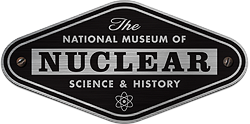Hanford’s History

Narrator: Located in southeastern Washington State, the Hanford Site is about half the size of Rhode Island. For fifty miles, the Columbia River flows through the site. For millennia, Native Americans camped and fished here. Around 1850, agricultural pioneers arrived and began raising cattle. Next, the communities of White Bluffs and Hanford were established.
Then, World War II changed everything. In early 1943, the US Army took over the Hanford Site and built massive plutonium production facilities. Within weeks, the settlers and their families were evicted. The local Native American tribes also were barred from the land.
The government constructed nuclear reactors and hundreds of support buildings, all dedicated to producing plutonium for nuclear weapons. On August 9, 1945, it was Hanford plutonium that fueled the “Fat Man” atomic bomb dropped on Nagasaki, Japan.
Throughout World War II and the Cold War, the site continued to produce plutonium. In the 1990s, Hanford was declared “America’s most contaminated site” and “the nation’s largest Superfund site.” Ninety percent of the site itself was never used by the government, and remains in relatively pristine condition. The remaining ten percent was concentrated along the river corridor and certain interior areas. Over the last thirty years, progress has been made to restore the river corridor as well as several other sections.
Today, six of the nine original nuclear reactors have been “cocooned,” and people can visit the B Reactor, which is now part of the Manhattan Project National Historical Park. The remains of such landmarks as the White Bluffs Bank and Hanford High School serve as ghostly reminders of the small farming communities that existed before World War II.
Ten miles south of the river is perhaps the most daunting challenge. Some 56 million gallons of highly radioactive and toxic wastes are stored in 177 underground storage tanks. More than one-third of the tanks have leaked, sending plumes of contamination toward the underground aquifer. After more than two decades and many setbacks, the government is now building a vitrification plant that will help to convert the liquid tank wastes into a solid glass-like substance. If all goes well, the process will begin treating liquid wastes in 2022. However, the project has a troubled history that makes many skeptical.
In the following vignettes, you will learn from government experts who took part in the cleanup of the Hanford Site, historians, environmental advocates, Native Americans, and Downwinders who grew up in Hanford area. Their stories convey the environmental legacy of plutonium, the progress made to date, and the challenges that remain.

B Reactor Tour Manager Russ Fabre explains why Hanford was chosen as the site for the Manhattan Project’s plutonium production reactor. Colonel Franklin Matthias, who selected the site, describes why he considered Hanford to be the perfect location.
Russ Fabre: Why was this area selected, Hanford? General Groves told one of his trusted aides, that was Lieutenant Colonel Franklin Matthias, to go West. He had nine areas that they were going to look at, with some very strict criteria.
One, an abundance of water. Here at Hanford, we have the Columbia River.
An abundance of electricity. Grand Coulee Dam, Bonneville Dam, could supply adequate electricity for the Hanford Engineering Works.
Abundance of construction material. The great Missoula floods deposited gravel beds in this area; that made it a prime location for construction material.
Now when Colonel Matthias came through and flew over Rattlesnake Mountain after visiting northern locations in Washington, as he crested the hill, he says, “This is it. This has to be it. There is no place like this anywhere else in the country.”
Narrator: Franklin Matthias remembers the conversation he had with the General.
Franklin Matthias: That night, I called General [Leslie] Groves from Portland and told him that I thought we had found the only place in the country that could match for a desirable site.
We are picking a place that has a spur line railroad from Milwaukee right into the place where we would feel that these facilities were going to be built, and that our property would probably include the switch station between Bonneville and Grand Coulee. Right on that big 230-Kv line, high voltage.
It had so much in favor of it. An area with almost no people. Fairly undeveloped. It just has all of the advantages. We were very enthusiastic about it.



